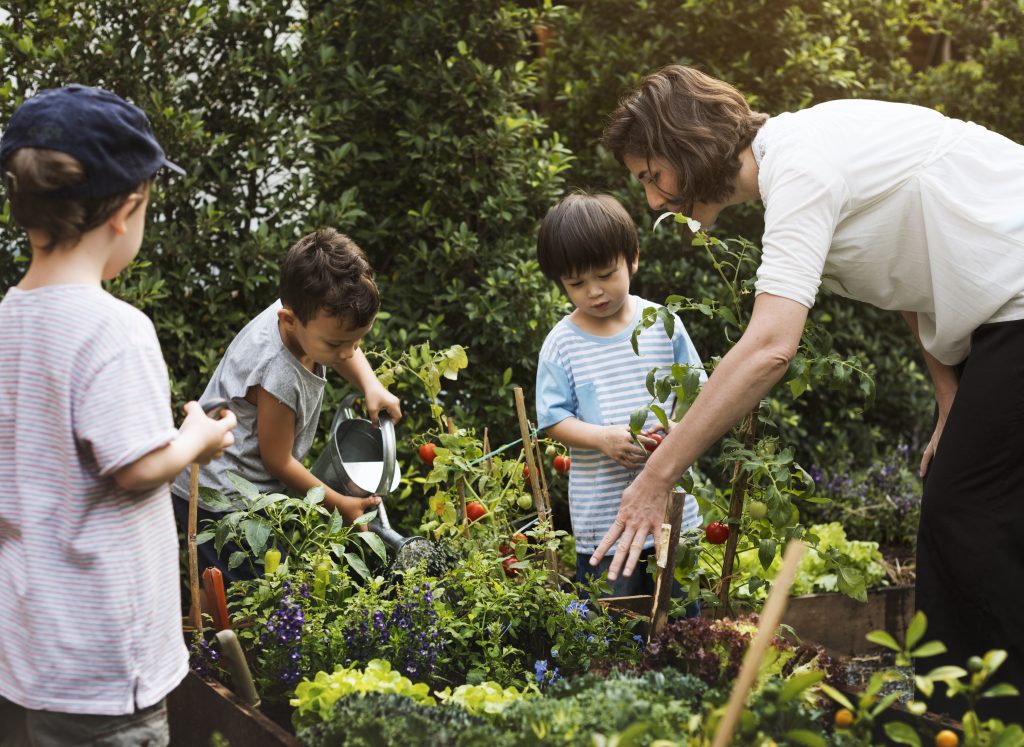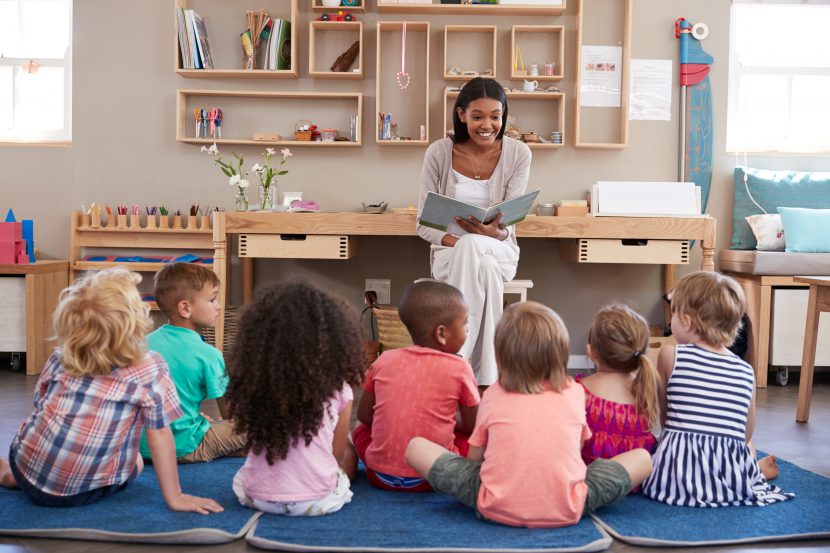The first Montessori school opened its door to students more than 115 years ago in Rome, Italy. What makes Montessori different from other educational methods, is its focus on both the mental and physical development of a child. Rather than imposing strict classroom rules and restrictions, parents and educators who follow the Montessori Method put children’s instincts, natural curiosity, and desire for learning first. Teaching manuals outline the best practices that every guardian can use to foster growth for the youngest ones.
Legacy of Maria Montessori
The life of one of the first female doctors, Maria Montessori, was centered on the importance of children’s development. She was not only an ambassador for world peace but also an educator who advocated for the rights of the youngest and most vulnerable ones. The Convention on the Rights of the Child is the focal point of the Montessori teaching method that revolutionized the way we perceive children and their behavior. (O’Brien, 2019)
At the beginning of her medical career, Montessori had a chance to meet many children while working as a surgical assistant. She noticed that children with disabilities were unfairly treated as caretakers couldn’t address their needs or understand their condition. Through her systematic research, a couple of years later, Maria Montessori come up with a sensorial education system that was to help children suffering from a spectrum of disorders. In one of her famous lectures at a university, she noted that “what really makes a teacher is love for the human child; for it is love that transforms the social duty of the educator into the higher consciousness of a mission.” (AMI, n.d.)
Montessori principles that encourage children’s growth
The secret of Maria Montessori’s successful method of education lies in supporting the children. Unlike the traditional approach where children are closely supervised and often lectured, Montessori allows her students to learn on their own. She believes that every child is capable of educating themselves in a nurturing environment. (AMI, n.d.) Children are free to make their own decisions and follow their instincts while asserting their right to engage in play. That way, the right to freedom of expression is also fostered at a very early age. (Montessori Northwest, n.d.)
Children in Montessori schools learn through imitation, movement, and active participation. Instead of focusing on writing and reading, young children spend time outside exploring the world using their tactile senses. Teachers encourage students to be independent by creating a safe environment for children to acquire skills. Educators don’t interrupt or prompt the children but support their learning style through a series of activities that help young ones develop motor and language skills, alike. (Montessori Northwest, n.d.)
Developing the personality of a child
The sad reality is that children nowadays still spend hours sitting in the classroom, ignoring their innate playfulness and curiosity. Educators like Maria Montessori took a step forward by accommodating children’s needs in the educational setting. She came to the conclusion that students appreciate opportunities to choose freely more than they like being praised or awarded. She also noticed that children focus better in simple environments, where colors don’t distract their attention.
That is the reason behind the minimalist classroom layout that stimulates children’s absorbent minds. Students get involved in real-life situations suitable for their age. Some of the games include practicing environmental awareness, dishwashing, cleaning, gardening, and so on. As a rule of thumb, children go through various stages while adopting sensorial and fine motor skills. It is only after they’ve acquired the basics, that they naturally shift their energy to reading and writing. (Ruhl C, 2021)

The Montessori atmosphere enables children to develop their own identities through self-regulated play. In order to become a healthy individual, there are certain stages that every child needs to go through. This educational method defined four phases of development, based on children’s needs and age.
The first group is children aged 0-6 who should be disciplined in a rather spontaneous manner, as this is the key area of growth. The second phase includes children aged 6-12 who are starting to formulate their senses. The third stage is puberty refers to 12-18-year-old teenagers who are looking for rewards and external praise for their work. Lastly, the Montessori Method talks about young adults, 18-24 years old, who are finally ready to live a prosperous and independent life. (Ruhl C, 2021)
Studies of the Montessori impact on children
There are about 20,000 Montessori schools in the world, among which the USA alone has more than 2,000. Being one of the largest centers in the words, it doesn’t come as a surprise that most of the research conducted on the success of this educational method originates in the USA. The experts were still not able to prove how effective and beneficial this methodology might be for the youngest ones.
It is challenging to draw conclusions simply because not all the schools that follow the Montessori philosophy are the same. Also, children are inherently different and they don’t necessarily attend the same school during their childhood. Montessori schools are also not accessible for children living in poverty, which is why the target group will likely consist of students who are exclusively well-off. (Marshall C, 2017)
Inconsistent implementation and research studies are just some of the problems that parents and guardians consider when enrolling their children in schools. It is almost impossible to judge for yourself how standardized your local Montessori school is. There is no guaranteed way to know are the teachers following the curriculum, just like in any other public or private school.
Parents have been also complaining about the lack of proper structure, as children grow up getting used to flexible deadlines, and individualized learning. However, as previously mentioned, the data remains ambiguous on whether children from Montessori perform better in life later on or not. (Li P, 2022)
On a positive note, the Montessori Method is to continue its legacy that has already proven to be successful for over a hundred years. Off the record, teachers, and educators all over the world report success with practical materials that assist children in developing key skills. As previously mentioned, Maria Montessori’s approach and philosophy heavily rely on realizing children’s rights through free play, movement, and building connections. Every child has the right to grow up to their fullest potential. Even though not all children will get to attend a special school, everyone has access to the right foundations that have been laid for a valuable and positive development of a child.
Alongside Montessori’s educational models, we, here at Humanium, have also developed a methodology with the help of trainers and psychologists. Our main goal is to help children not only realize their potential but also use it for the greater good.
One of our field projects took place in a genocide-stricken area of Rwanda, where we organized sessions in collaboration with Humanium therapists and community leaders. So far, the children of Rwanda got to participate in more than 50 events put together in their local villages. Consequently, we have reached thousands of kinds in Rwanda to help them heal from generational trauma and break the unhealthy cycle.
If you too are passionate about children’s rights and would like to join our team, please consider sponsoring a child, becoming a volunteer, or donating to make a change. We are always grateful for your help!
Written by Lidija Misic
Bibliography:
Association Montessori International, AMI, Biography of Maria Montessori (n.d.), retrieved from: https://montessori-ami.org/resource-library/facts/biography-maria-montessori, accessed on September 20, 2022.
Li Pamela, Parenting for Brain, Why Montessori Is Bad, the Pros and Cons in Preschool (June 28, 2022), retrieved from: https://www.parentingforbrain.com/why-montessori-is-bad/, accessed on September 21, 2022.
Marshall Chloe, NJP Science of Learning, Montessori education: a review of the evidence base (October 27, 2019), retrieved from: https://www.nature.com/articles/s41539-017-0012-7#Sec7, accessed on September 20, 2022.
Montessori Northwest, Montessori Education (n.d.), retrieved from: https://montessori-nw.org/about-montessori-education?gclid=CjwKCAjwyaWZBhBGEiwACslQozsxqym8Cbx57lNqvc1Up5xy6ycLWML70m7JYT3mIjXzj94FvsHLVBoC1w0QAvD_BwE, accessed on September 20, 2022.
O’Brien Philip, AMI, What is the Convention on the Rights of the Child (November 10, 2019), retrieved from: https://esfforchildrensrights.com/whatistheconvention, accessed on September 20.
Ruhl Charlotte, Montessori Method of Education, Simply Psychology (June 29, 2021), retrieved from: https://www.simplypsychology.org/montessori-method-of-education.html#:~:text=The%20Montessori%20method%20of%20education%2C%20named%20after%20its%20founder%20Maria,so%20in%20a%20suitable%20environment, accessed on September 20, 2022.


